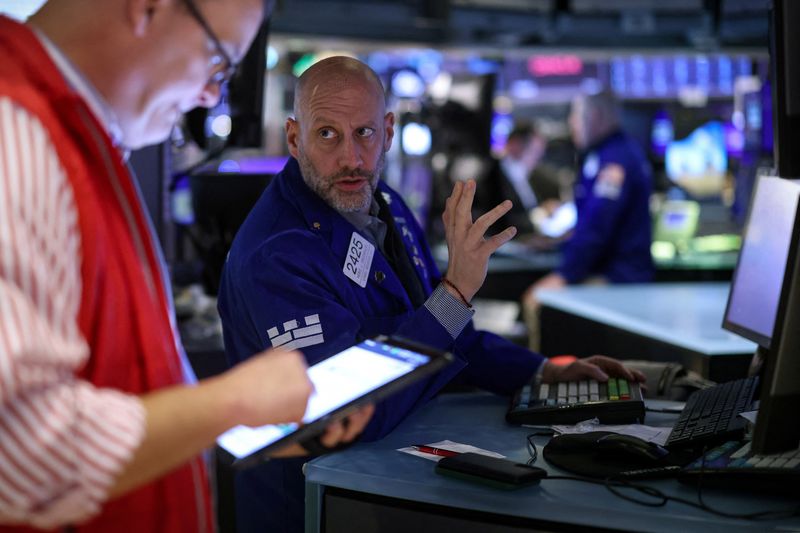By Sinéad Carew
NEW YORK (Reuters) -A global equities index advanced slightly on Tuesday as investors weighed the outlook for central bank rate cuts after the latest batch of economic data and ahead of a key U.S. inflation reading due Thursday, while the dollar fell against the yen.
Oil prices rose after reports that producer group OPEC+ was considering extending voluntary oil output cuts into the second quarter to provide additional support.
Earlier in the day, the Conference Board said U.S. consumer confidence retreated in February after three straight monthly increases as households worried about the labor market and the domestic political environment. Its consumer confidence index slipped to 106.7 this month versus economist expectations of 115.0 and a downwardly revised 110.9 for January.
Also, orders for long-lasting U.S. manufactured goods fell by the most in nearly four years in January amid a sharp drop in bookings for commercial aircraft, while the outlook for business investment on equipment was mixed.
The next key data investors are looking to is Thursday's release of January's U.S. personal consumption expenditures index (PCE), which is the Federal Reserve's preferred inflation measure.
"We've a bit of a defensive tone in the market today with the utilities sector leading gains," said Chris Zaccarelli, chief investment officer at Independent Advisor Alliance in Charlotte, North Carolina.
"Investors are looking ahead to Thursday's inflation reading. If it remains sticky it will impact how soon and how many times the Fed will cut rates," and because of this "markets are relatively flat because investors are in wait-and-see mode," he said.
Currently, about 63% of traders expect the Fed to start cutting rates by June, down from nearly 98% at the end of January, according to the CME Group's (NASDAQ:CME) FedWatch tool.
Federal Reserve Governor Michelle Bowman signaled that she was in no rush to cut U.S. interest rates, particularly given upside risks to inflation that could stall progress or even cause price pressures to resurge.
In equities, the Dow Jones Industrial Average fell 96.82 points, or 0.25%, to 38,972.41, the S&P 500 gained 8.65 points, or 0.17%, to 5,078.18 and the Nasdaq Composite gained 59.05 points, or 0.37%, to 16,035.30.
Among the S&P's 11 major sectors, utilities was the biggest percentage gainer, up 1.9%.
MSCI's gauge of stocks across the globe rose 1.43 points, or 0.19%, to 760.60.
In currencies, the dollar was down slightly against the Japanese yen after data showed Japan's core consumer inflation exceeded forecasts and the greenback also reacted to January's bigger than expected decline in U.S. durable goods orders.
The dollar index gained 0.04% at 103.81, with the euro down 0.02% at 1.0845. Against the Japanese yen, the dollar weakened 0.14% at 150.49.
"We're waiting for the PCE data to give us a stronger sense of direction perhaps," said Shaun Osborne, chief currency strategist at Scotiabank (TSX:BNS) in Toronto.
And because investors are already expecting strong numbers, it would probably "have to be a big upside surprise to really get the dollar strengthening," Osborne added.
In U.S. Treasuries, yields rose moderately in choppy trading, as investors waited for Thursday's inflation data.
In energy markets, oil prices were also supported by notes of caution from Israel, Hamas and Qatari mediators about progress towards a truce in Gaza, after U.S. President Joe Biden said he believed a ceasefire could be reached in under a week to halt the war for Ramadan.
U.S. crude settled up 1.66% at $78.87 a barrel while Brent finished up 1.36% at $83.65 per barrel.
Gold prices held steady with the U.S. inflation reading and comments from Fed officials on investors' radar this week.

Spot gold lost 0.04% to $2,029.82 an ounce. U.S. gold futures gained 0.36% to $2,035.90 an ounce.
In cryptocurrencies, bitcoin rose 3.90% to $56,795.00.
